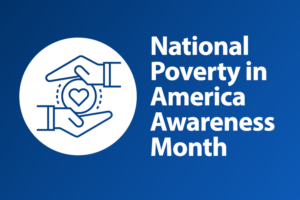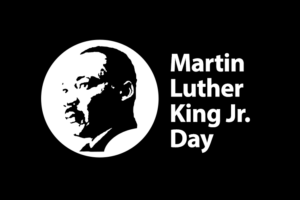Sarah Ford | December 7, 2011
A Dynamic Leader Helps Keep a Food Charity’s Cupboards Full
The Chronicle of Philanthropy recently released an article featuring one of America’s Charities member charities, Feeding America, and pointed out some key factors that have significantly contributed to Feeding America’s success in keeping food charity cupboards full amid one of the worst economic downturns of our time.
While we encourage you to read the full article about Feeding America on The Chronicle of Philanthropy’s web site, any non-profit group can achieve similar levels of success if they are willing to learn from the following three concepts that we took away from reading the article.
#1: Successful Organizations Think Creatively
- Regarding Feeding America’s new leader, Vickie B. Escarra, “Food-bank leaders nationwide say Ms. Escarra’s leadership is a key reason that even amid the economic downturn, Feeding America will manage to increase contributions to nearly $115-million in the fiscal year that ends in June, compared with $33-million in her first year” (Hall, Holly. “A Dynamic Leader Helps Keep a Food Charity’s Cupboards Full.” The Chronicle of Philanthropy. 4 Dec. 2011. Web. 07 Dec. 2011. <http://philanthropy.com/article/A-Dynamic-CEO-Keeps Food/129955/?sid=pt&utm_source=pt&utm_medium=en>.).
- However, it’s not necessarily the fact that Ms. Escarra is a “new” leader that has led to Feeding America’s success. Feeding America has been successful largely due to the fact that Ms. Escarra is willing to think beyond traditional means of raising funds and support.
- Historically, grocery stores and retailers that sell food have supported community food banks and Feeding America. With Ms. Escarra’s leadership, Feeding America has built relationships with nontraditional donors (i.e. insurance, financial, and pharmaceutical services companies) in effort to bring in new streams of donations – corporate gifts that allow for more food cabinets and , allowances that provide money for advertisements/PR; endowments that help pay for additional fund raising staff; and grants to support and expand existing programs.
#2: Successful Organizations Put Great Ideas Into Action
- “Food-bank veterans say her [Ms. Escarra’s] decisions to transform the charity’s image, restructure its fund-raising staff, and make other changes has enabled the nonprofit organization to reach out to a broad range of national companies and wealthy Americans who had never previously paid much attention to food banks” (Hall, Holly. “A Dynamic Leader Helps Keep a Food Charity’s Cupboards Full.” The Chronicle of Philanthropy. 4 Dec. 2011. Web. 07 Dec. 2011. <http://philanthropy.com/article/A-Dynamic-CEO-Keeps Food/129955/?sid=pt&utm_source=pt&utm_medium=en>.).
- No matter how obvious or simple a great idea may sound, it often takes a bold person to actually execute that great idea. When Ms. Escarra first stepped up as Feeding America’s new leader, she immediately acknowledged the fact that the organizations name (which was “Second Harvest” when she started) was hindering their fund raising ability; so she changed it. By renaming the organization “Feeding America”, the name says exactly what the group does and makes it that much easier to gain support from donors.
#3: Successful Organizations Invest in Their Resources
- Ideas alone don’t make something great. It’s how you put those ideas into action that brings success. The Chronicle of Philanthropy quoted Ms. Escarra in this article as saying, “we began a strategy of fund raising rather than it being an afterthought.” Feeding America didn’t just sit around and wait for things to fall into place; they created a plan and actively set out to achieve the goals from the plan.
- By investing a lot of time improving efficiency, Ms. Escarra was able to help individual community food banks improve their operations and expand their services, thus having an even greater impact in the community. Also, she helped Feeding America’s staff to work as a more cohesive team. After combining two corporate divisions into one, staff members were able to perform better, build better relationships with corporate supporters, and improve overall “corporate satisfaction.” As a result, they were able to hire more staff and create undertakings to continually build on their success.
- By spending nearly 70% of her working hours traveling to individual communities, talking to the local media, rallying for support at local fund-raising events, and working with local food banks to identify local donors and reaching out to those donors for support, Ms. Escarra was able to take success at the local level to achieve even greater results for the overall organization.
Nonetheless, these times are more challenging than ever. Even though Ms. Escarra’s leadership has greatly influenced Feeding America’s success in recent years, Feeding America (like many non profit groups) is worried about how reduced government support will impact their organization in the coming year. We are living in a time when you pretty much HAVE to be creative and adapt just as Feeding America has done through Ms. Escarra’s leadership. Those organizations that act accordingly will persevere in the long term.
To read The Chronicle of Philanthropy’s full article about Feeding America, click here.
Get Resources and Insights Straight To Your Inbox
Explore More Articles
Open Position: Customer Service Coordinator (Remote-Part Time)
Position Title: Customer Service Coordinator (Remote – Part Time) Department: Charitable Funds Management Solutions We are a non-profit charitable organization looking for skilled individuals who…
Read ArticleGet Resources and Insights Straight To Your Inbox
Receive our monthly/bi-monthly newsletter filled with information about causes, nonprofit impact, and topics important for corporate social responsibility and employee engagement professionals, including disaster response, workplace giving, matching gifts, employee assistance funds, volunteering, scholarship award program management, grantmaking, and other philanthropic initiatives.




